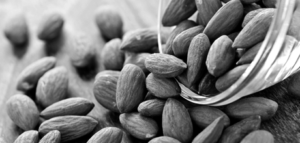Cut just 100 calories a day.
According to research, that’s all you need to ditch to beat belly bulge. Dropping this amount from your daily intake – for instance one biscuit, a fizzy drink, or a glass of wine – will help you lose about 12 pounds a year. And it’s a cinch to stick to a plan that requires no actual dieting or deprivation.
Build muscle mass.
During a cardio workout, your body burns hundreds of calories, but your metabolism slows down almost instantly when you stop. After strength training, on the other hand, you burn fat for hours after. It’s recommended that you do three 45-50 minute sessions a week.
Run from fat.
One of the most effective ways to reduce flab around your middle is to jog it off. If steady running is not your thing, then try Interval training – constantly switching up the pace of your workout – will also help you lose weight, because it blasts more calories. For example, do two minutes of sprinting followed by a 60 second walk, then repeat for a half hour.
Eat good-for-you foods.
Your body is smart and it knows when it’s not getting any nutrients. So if you munch on processed foods like crisps and cakes, you’ll still be hungry. Munch regularly on fruits, vegetables, fish, low-fat dairy, and whole grains for an instant fix.
Have a high-protein breakfast.
Skip the sugary cereals. They’re too easily digested, which means they speed through your system. An egg-white omelette is a good choice. If you’re eating on the go, try unsweetened Greek yogurt with fruit and a dollop of honey or low fat cheese with whole-grain bread.
Don’t skip meals.
That will only set you up to overeat. Nosh on small portions every three to four hours to keep your metabolism running, so your body won’t panic, go into starvation mode, and stop burning calories – which is what happens when you haven’t eaten in a while.
Avoid a freak-out.
Stress causes the body to start stockpiling fat in the gut. Your system thinks a crisis is coming and deposits fat cells into the belly because it’s the most convenient storage space. Chill out with yoga, meditation, or massage. If you’re a stress eater, keep healthy snacks such as almonds on hand to prevent junk-food binges.
Get your shut-eye.
Lack of sleep increases the likelihood you’ll gain weight. When you’re tired, the hormones that stimulate appetite increase, while the hormones that help you feel full plummet. Aim for seven to eight hours a night.
Move more all the time.
Computers, TVs, video games, and cars keep us glued to our seats. The result: We’re less physical than ever before. To trim your tummy, do whatever you can to keep moving. Even 10 minutes can help. Studies show that you can burn up to 350 calories a day (the equivalent of your lunch!) by walking around when you’re on the phone, tapping your toes when you’re surfing the Web, doing squats when you’re brushing your teeth. Before you know it, you’ll be saying bye-bye, belly fat!

